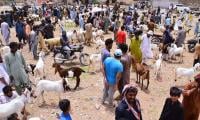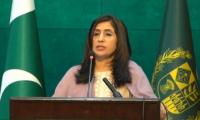Federal Education Minister Shafqat Mahmood has re-emphasized that a national curriculum will be implemented in public schools, private schools and madressahs with the objective of ending social disparities in education.
To what extent will a universal curriculum end or reduce inequalities in education? While it is important to set standards in terms of what children are expected to learn, the real challenge is to address the learning gap between advantaged and disadvantaged students.
To address this question, let’s take government schools as an example. These schools follow one curriculum, and are generally subject to the same set of policies and a similar set of inputs (although resource endowment levels do vary). In such an education system that adheres to one curriculum and a similar policy environment, are public schools able to eliminate disparities in education?
Recently published research under the Teaching Effectively All Children (TEACh) project provides an answer to this question. The researchers found that children in government schools in rural Punjab are learning over the course of the year however, socio-economically advantaged pupils make more progress than other pupils within the same schools. What these findings imply is that the backgrounds and innate abilities of students enrolled within the same government school vary, and even when exposed to the same curriculum, the same school environment and even the same teacher, the inequities in learning between advantaged and disadvantaged students persist and can become worse over time.
If we extend these findings to the argument for implementing a uniform curriculum, it is apparent that a uniform curriculum on its own will do little to address inequalities in learning which exist not just across schooling systems but also within schools and classrooms. What warrants greater attention is ensuring our schools and teachers are equipped with tools to adapt different approaches to suit the needs of all levels of learners. Unfortunately, there is no quick fix to help us achieve this. Developed countries re still struggling with this challenge.
So then what can we do? We first need to be able to accurately and expeditiously diagnose learning inequalities and ensure that we are able to measure the extent of these inequities within public schools, private schools and madressahs. To do this, we require regular student assessment data to track how much individual students are learning at various stages of their schooling.
In addition to this, information on the socio-economic backgrounds of students is also important to identify the impact of schools on improving student learning for the most vulnerable populations. Lastly, more information on what goes on inside classrooms is essential to identify specific teaching practices that may be associated with higher student learning for disadvantaged populations in particular.
There is a wide body of research that points to teachers being the most critical schooling input in determining student learning. Therefore, we need more information on teaching practices across all schooling systems to unpack what is happening in the classroom. In this regard, the government of Punjab has recently launched an innovative programme using assistant education officers to observe classrooms in public schools using a smartphone-based classroom observation application that feeds into a dashboard.
If successful, such initiatives should be replicated elsewhere to ensure that policymakers are able to link this information with other student and school level information. On its own, a uniform curriculum will do little to address learning inequalities, but improving the quantity and quality of information is an essential first step to address this learning challenge and make informed decisions.
The writer is an education economist.
People stand in line up as election officials check their ballot papers during voting general election at a polling...
Women show their voter identity cards as they stand in a queue before casting their votes in Agartala. — PTIThe 18th...
Former prime minister Imran Khan. — Instagram/ imrankhan.ptiAn old saying has it that “when you dance with the...
Kashmiris in Indian illegally occupied Kashmir protesting against the Indian occupation as the forces of India looked...
A representational image showing residents walking at a wholesale market in Karachi. — AFP/FileOnce again there is...
A representational image showing late Pakistani human rights activist and Supreme Court lawyer Asma Jahangir. —...







